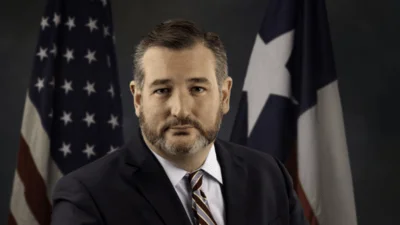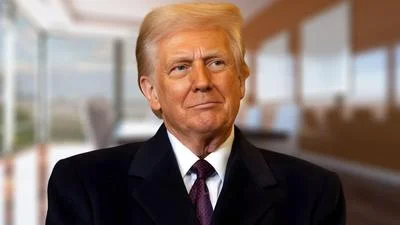The Congressional Record is a unique source of public documentation. It started in 1873, documenting nearly all the major and minor policies being discussed and debated.
“TRANSPORTATION FUNDING” mentioning the U.S. Dept. of Transportation was published in the Senate section on pages S7453-S7455 on Oct. 22, 2015.
The publication is reproduced in full below:
TRANSPORTATION FUNDING
Mr. CARPER. Mr. President, I would just note that the Presiding Officer and I are on the same schedule, because I come here a couple of times a week, but you are here more often than not when I am speaking. I am sorry. This is cruel and unusual punishment, I suspect, for you. But I welcome the opportunity. Thank you for showing up. Otherwise, I would not have a chance to share these thoughts today with the folks that are in the Chamber and anybody else who might have tuned in.
Earlier this year, the Senate actually took up legislation that was reported out of the Environment and Public Works Committee, which was a 6-year Transportation authorization bill. A lot of people who don't work here don't realize that for us to spend money--taxpayer money--in most cases we have to authorize a program at certain funding levels. Then we have to come back and do a second step, and that is to actually appropriate the money to spend that has been authorized.
Usually, if we are authorized to spend $100 in a program, we cannot come in and just appropriate a lot more money than that. We have to do it within the levels set by the authorization bill.
Well, we took up on the floor of the Senate the Environment and Public Works Committee's 6-year Transportation bill, coauthored by Senator Inhofe and Senator Boxer, Republican and Democrat, and reported out of the committee unanimously. Most people think we fight about everything. Well, we don't. Environment and Public Works Committee Senators Boxer and Inhofe have been very good at working together on these authorization bills.
Now, the authorization bill does not contain the funding, but it says: These are our transportation policies, and this is the level that we think is appropriate. But it does not actually fund a dollar to go to those programs.
Well, over in the House of Representatives today, they got in the act. As I understand it, the House transportation committee has reported out--I think on a voice vote--their own 6-year authorization bill. This is good. It has not passed the House yet, but at least it is out of committee, with apparently a fair amount of broad support, which is good.
This is the Senate-passed bill called the DRIVE Act, reported out by the committee a couple of months ago and passed the Senate here more recently. As you know, we have names for our bills, such as the names for cars. But the DRIVE Act, the Senate-passed bill, the Surface Transportation Reauthorization and Reform Act, has a number--3763. It is a 6-year authorization for transportation programs.
Do these bills have any good ideas in them? Well, they really do. As it turns out, there is a fair amount of common ground that these two pieces of legislation share, the Senate-passed bill and the bill out of the House committee.
One of them is that there is a new focus on making freight transportation more reliable, more affordable, and more efficient. When you look at an outfit called McKinsey & Company, a big international consulting firm, they have an entity, an appendage of McKinsey, that is called the Global Institute. A year or so ago, they opined that a fully funded, robustly funded transportation program in the United States would provide 1.8 million new jobs in this country--1.8 million new jobs in this country--and that it would grow GDP, gross domestic product, by 1.5 percent per year--not just one time, but per year. Those are pretty amazing numbers, actually, for me.
Well, one of the things that actually drives the increase in employment and the growth in GDP is a more efficient freight transportation system and one that actually focuses--as in this legislation--on freight, and not just moving our cars, trucks, and vans but actually figuring out how we move freight from place to place in a more efficient way.
The second area where there seems to be some agreement is that both pieces of legislation prioritize--especially the Senate version--bridge safety and large facilities of national importance. Think big bridges; think big tunnels. We have a bunch of bridges in this country--I forget what the percentage is--that are substandard, not safe--maybe one out of every nine. So take your choice for the bridges you are going over. Think about that. One in nine is deemed to be essentially unsafe.
Both of those bills say: Well, that ought to be a priority and we would like to authorize higher spending for that. These bills focus on clean air funding and toward some of the most dangerous sources of emissions--diesel emissions. A lot of it comes from roadbuilding--road and highway--and bridgebuilding equipment that is diesel powered and puts out harmful emissions.
Actually, our bill in the Senate does some good things to reduce those emissions while we go about building these transportation projects. One of the things that I especially like about our bill is that it says that eventually we ought to have an approach to funding roads, highways, and bridges.
Maybe it should be something that reflects vehicle miles traveled. We don't have that kind of magical system now. In Oregon, they have been trying to do it for 10 years. They call it RUC, a road user charge. They have maybe 5,000 families that are actually using this. But it is a long way from 5,000 families in Oregon to having a national system that we can use to come up with money to pay for roads, highways, bridges, and transit.
But our Senate-passed bill establishes research to develop alternative user fees to replace, maybe eventually, the gas and diesel tax somewhere down the line--not next year, probably not this decade, but somewhere down the line. I think that should be a growing part of the source of revenues to pay for transportation.
The Senate bill even increases--bumps up not hugely but bumps up a little bit--the baseline funding and funding for transportation. I wish it had been more, but at least it is an effort to do that. Our next chart is one of my favorite charts. I have a friend from Montana, a former attorney general, former Governor, former chairman of the Republican National Committee, whose name is Marc Racicot. Folks from his State like to talk about cowboys who really are not cowboys.
They have a saying out there. They say: All hat, no cattle. In this case, we can have all the transportation authorization bills until the cows come home, but unless we actually fund them, they are just words on a piece of paper, and we don't build a road or a highway or a bridge or do anything on the transit side unless we actually fund them. I don't know who this guy is, but I love this poster. All hat, no cattle. That is where we are right now because we don't have agreement on how we are really going to pay for robustly funding transportation projects.
There is an idea out there that goes beyond lousy pay-fors. I think the kind of stuff goes like this: We steal money for 10 years out of TSA, instead of making our skies safer, and we put that money of 10 years of revenues into 3 months of helping to fund transportation projects. That is not too smart, but we do that. Instead of making border crossings in this country safer, where folks are trying to get into our country, we use Customs fees for that purpose. But instead of using it to make our border crossings safer and our ports of entry safer, we put 10 years of Customs fees collected into 3 months or so of transportation projects.
We look at the Strategic Petroleum Reserve, for which we bought the petroleum. We try to buy it low and not use it very much. But we will see what we spent in the last couple of years buying and refilling our Strategic Petroleum Reserve, at $80, $90, maybe $100 a barrel, and now we are selling it at basically half of that price.
You are supposed to buy low and then sell high. That is where you end up making your profits. What we are doing with our Strategic Petroleum Reserve is to buy high, sell low, and use whatever money we realize to help pay for some transportation projects--not a real smart investment strategy.
What Senator Dick Durbin and I have introduced is something we called the TRAFFIC Relief Act. It is an acronym. Tax Relief and Fix the Trust Fund for Infrastructure Certainty Act of 2015. Here is the real thing we need to know about. It raises $220 billion over the next 10 years. We raise $220 billion in the next 10 years to go into the transportation trust fund.
If we just want to go, frankly, not to a level of spending that actually addresses the problem, then, in fact, we have our roads, highways, and bridges get a D-plus. Civil engineers across the country every year evaluate our transportation infrastructure. They give us a D-plus. ``D'' as in ``dog.'' ``D'' as in ``dangerous.'' ``D'' as in
``degraded.'' That is when you spend $90 billion a year, which is maybe contemplated in the authorization legislation--maybe a little bit more. We don't really make much of a dent in the work that needs to be done.
What we propose in our legislation is $220 billion, and we would have
$130 billion for new investments in repairs and upgrades. I should be able to do some new projects and make a bigger dent in the ones that need our attention.
Let's see what we have in our next chart. I think there is a fair amount of support for doing that from what I hear. Let's take a look.
We looked at a couple of recent editorials that basically say what day--I think from these newspapers are from coast to coast, from North to South, East to West. Believe it or not, they say we ought to pay for transportation--roads, highways, and bridges. It should be that the user pays to use the roads, highways, and bridges. They ought to pay for them. It is what we have done for years. If we raise the gas and diesel tax from 1993--22 years ago, about 18 years ago for the gas tax, 23 cents for the diesel tax--in today's purchasing power, adjust for inflation. So the gas tax is worth less than a dime, not 18 cents, but less than a dime. The diesel tax is not worth 23 cents, but less than 15 cents--probably closer to 12 cents.
Here is what some of the people say. The New York Times says:
``Highways Need a Higher Gas Tax.'' They are essentially saying restore the purchasing power of the gas and diesel tax. All right? Not add $1, not add 50 cents or 25 cents, but restore the purchasing power.
USA TODAY says: ``Raise the gas tax: Our view.'' They also add:
``Highway funding hijinks: Our view''--which actually coincides with mine.
Let's see if we have any others. The Washington Post says, and this is a very recent one: ``Highway Transportation Fund needs a permanent and simple fix.'' Even more recent, editorial board said: ``Congress recklessly refuses to top up the Highway Trust Fund.'' Then even more recently: ``Congress should fix the gas tax.''
Again, restore the purchasing power of the gas and diesel tax, not to use it for extraneous stuff, not to use it for foreign aid, not to use it for Afghanistan or other places around the world, not to use it for health care, not to use it for education, but to use it to take these roads, highways, and bridges that are deteriorating and actually put the money, any extra money we generate, into those. Bangor, ME: ``The nation's highway fund doesn't have to continue to lose ground.''
The Register-Guard--I am trying to remember where that is. I am not sure where the Register-Guard is, but it said ``Just raise the gas tax'' in an editorial in July.
Again, the Washington Post opined the same message earlier in January of this year. Let's look at that one again. They said: ``With oil prices low, now's the perfect time for Congress to raise the gas tax.'' That is what they said in January of this year.
As it turns out, we did some checking. We found out last week, at 29,000 gas stations across the country, they are selling gas for less than $2 a gallon. Think about that: 29,000 gas stations across America. The gas station in my neighborhood is at $2.09, and the Washington Post opined 7 months, 8 months, 9 months ago that ``With oil prices low, now's the perfect time for Congress to raise the gas tax.'' Actually, gas prices are about half a dollar lower now than they were then.
If the Iran agreement is fully implemented, Iran--which now produces about 200,000 barrels of oil a day--a year from now they are going to be producing about 1 million barrels a day. This suggests to me that a world already awash in oil might actually continue to be awash in oil for a while, so with the low oil prices, I think there is reason to believe they are not going to spike back up any time soon.
There are more editorials and headlines. The Miami Herald: ``Fix our roads.'' Akron Beacon Journal, Akron, OH: ``Raise the gas tax and make better policy.'' The JournalStar, which is in Nebraska: ``Follow the logic on gas tax.''
Those are major newspapers across the country. We have also had some polling done, not by us, but by the American Road & Transportation Builders Association and also by Mineta. Some of us remember Norman Mineta, former mayor of San Jose, the Secretary of Transportation who worked in both the Republican Bush administration and the Clinton administration. In these two recent nationwide surveys, clear majorities have indicated support for increasing fuel taxes as a fair way to invest in transportation projects.
This is from the American Road & Transportation Builders Association:
A Strong Majority Supports Payments to Keep Up With Inflation
By more than a 2:1 margin, voters support increased payments directed to upkeep of the nation's infrastructure, given the need to keep up with inflation. About 68 percent to 70 percent support, strongly support, or somewhat support doing that. We have another recent poll, and these are just representative samples. There are others that are coming out almost weekly now.
The Mineta Transportation Institute Poll--there is one that gives a variety of different options in gas tax, sales tax, and vehicle-miles-
traveled fee. The one that actually gets the most support is a 10-cent increase with revenue used just for transportation--not for any other purpose, just for transportation--71 percent. I was surprised it was this high. People want us to fix their roads, highways and bridges. They are tired of paying for repairs to their vehicles.
The next quote is from the Philadelphia Inquirer today. They are talking to people who read their paper. ``The next time your axle snaps or a tire rim is bent on a bumpy highway, consider delivering the broken car parts to your congressional representatives''--your representatives in Congress, your House Members, and your Senators.
The average amount of money that we spend on repairs of cars, trucks, and vans every year that is related to bad roads and bad bridges is anywhere from $350 a year to as much as $500 per year. That is the range there.
I wish to close with sometimes people say you can't vote--we can't vote here to do this stuff. None of us will ever get reelected.
Well, wait a minute. How about the 12 States where in the last 2 years they actually voted to do this stuff. State highway transportation departments get about half of their money from the Federal Government, and they raise about half of their money locally. Their major sources of revenues locally are taxes and user fees on gas and diesel.
In 12 States in the last 2 years they voted to do this. These are mostly red States because there are more red States, at least with legislatures and Governors, than blue. But 95 percent of the Republican legislatures voted to raise user fees on gas and diesel in their States; 95 percent of them were reelected last fall. They won their primary; they won their general. They were reelected.
Who wasn't elected as much? The people who voted against doing that. So the folks who actually voted to raise the user fees actually were reelected more than the people who voted against it.
On the Democratic side, in the States where they voted to raise the user fees to pay just for transportation--not for anything else--90 percent of the Democrats were reelected. More legislators were reelected than did not get reelected. So just keep that in mind.
I have said enough. The majority leader is waiting, and I thank him for his patience, but here is the long story short: There is a need out there. The American people expect us to do something about it. They want us to work together. We need not just to have a hat. This can't be all hat; there has to be some cattle. Where is the beef? Where is the money to pay for all of this stuff?
I will be back next week to talk about it some more, and I thank the majority leader for his patience.
The PRESIDING OFFICER. The majority leader.
____________________








